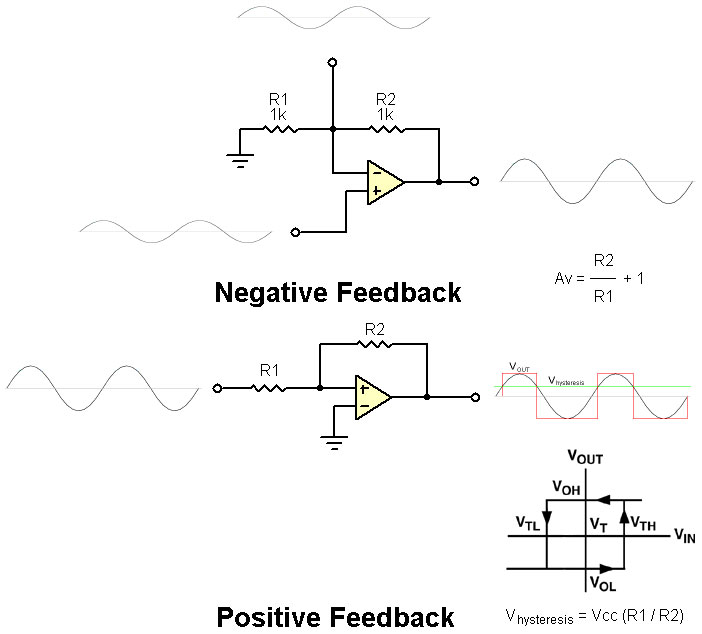With TJ Byers
SOUND OR SCHMITT?
Question:
I am a university student studying electronics and I have yet to see a satisfactory explanation of Schmitt triggers. Particularly, what is the difference between positive and negative feedback? Why does positive feedback cause oscillation in one configuration and eliminate it in another? And why does the Schmitt trigger circuit follow the hysteresis curve the way it does?
— Peter
Answer:
Let’s start by defining feedback. Feedback is any force or influence — electrical or mechanical — that invokes a change on another electrical or mechanical element. A perfect example of feedback is your room air conditioner. When the room gets too hot, the air conditioner turns on. Once the room is cooled to satisfaction, the air conditioner turns off. The process of turning the unit on and off is the result of feedback from a thermostat.
Feedback is controlled in loops; loops that feed back information from the output to the input. Feedback can be digital (as in the example of the air conditioner) or linear in nature. When used in electronics, the feedback is typically linear. When the feedback is negative, the output subtracts something from the input, as shown in Figure 1. An ideal op-amp is assumed to have infinite gain. That is, without feedback, a microvolt at the input can theoretically transform to one million volts at the output. (In reality, most op-amp gains are limited to 10,000.) To control the gain of the op-amp, a negative voltage is mixed with the positive input voltage by injecting a part of the output into the inverting input. This mixing of positive and negative reduces the gain of the op-amp and gives us a handle on a precise value for the amount of amplification. The gain is controlled by the ratio between R1 and R2. If both resistors are equal, the voltage gain is 2: Av = (R2/R1) + 1.

Positive feedback has just the opposite effect. It adds positive output voltage to the positive input voltage. The output voltage is now reinforced rather than diminished. A small amount of positive feedback will cause the op-amp to oscillate — as in when a PA microphone feeds back to the speakers to cause that excruciating squeal. A large amount of feedback causes the output to latch in one of two states: either full on or full off. The output state can be changed only if the input overcomes the positive feedback to trip the balance of powers. This is a dead zone known as hysteresis. Inside this zone, no change in the output voltage can occur. The wider the hysteresis, the more voltage swing it takes on the input to toggle the output. Hysteresis is equal to the ratio between R1 and R2: Vhysteresis = Vcc (R1/R2). If R1 equals 10K and R2 equals 100K, then the hysteresis band gap is 0.5 volts (with a Vcc of five volts). This means that the input voltage must swing a full 0.25 volts either side of the switching point before the output will follow suit.


Comments